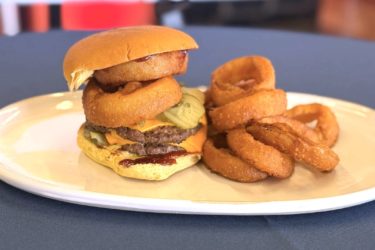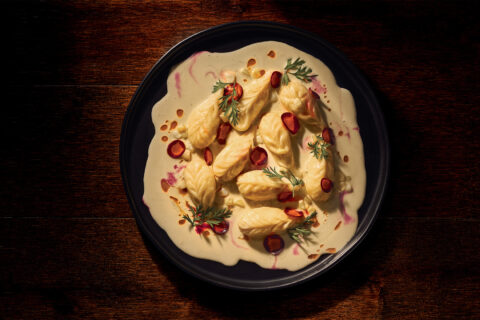The Local newsletter is your free, daily guide to life in Colorado. For locals, by locals.
In our April issue, I wrote an essay about children and food allergies. I know this subject well because my youngest daughter is allergic to eggs, dairy, peanuts, tree nuts, sesame seeds, and avocado.
Aside from avocado, these ingredients are pervasive in the foods most people eat everyday. Sesame seeds are included in crackers and many breads (not to mention hummus), nuts are hidden everywhere, and eggs and dairy, well, you can pretty much forget about any breakfast food, dessert, or baked good.

These types of allergies can be paralyzing, but being the food editor of this magazine, I decided to view the experience as a challenge. It’s important to me that my daughter have the same pleasurable experience with food that the rest of us do. So, I’ve learned to cook and bake without these ingredients, I’ve gotten to know menus better than before, and I’ve learned the questions that I need to ask when dining out. Below are my tips—feel free to add yours in the comment area below.
INGREDIENTS
When baking or cooking something like pancakes or waffles, I substitute Bob’s Red Mill ground flax seed for eggs. For each egg called for, soak one tablespoon of ground flax seed in three tablespoons of warm water for five minutes. Add to the recipe and proceed as normal. (Bob’s Red Mill also offers an egg replacement product, but I prefer the wholesomeness of flax seed.)
In place of butter, I buy Earth Balance’s organic coconut spread. The spread contains no cholesterol and it imparts a slight coconut flavor. My only complaint is that the smoke point is low. (I turn to coconut oil when I need to cook with high heat.)
In place of milk, I rotate between Earth Balance soy and Silk coconut milks. When baking, I find that soy yields puffier results. I have not yet experimented with oat or rice milks.
In place of cheese, I rely on Daiya‘s dairy-free products. I’ve found that these melt and taste better than other brands. Oddly enough, the cheese that comes in blocks melts significantly better than the shredded variety.
In place of peanut butter, I purchase MaraNatha sunflower seed butter. I like the flavor better than the slightly off-tasting soy nut butter.
WEBSITES AND COOKBOOKS
I’ve spent a tremendous amount of time researching websites and cookbooks. Some of my favorites:
Chloe Coscarelli‘s website and books are phenomenal resources. She gained fame by impressing judges with her vegan treats on the Food Network’s Cupcake Wars but her savory recipes are also reliable. I especially like this recipe for roasted squash, apple, and caramelized onion pizza.
I’ve experimented less with Vegan Pie in the Sky, but I enjoyed these chai spiced snickerdoodles.
Say what you will about Alicia Silverstone, but her blog the Kind Life is jammed with information and recipes.
Elana’s Pantry, which was originally conceived as a celiac disease–specific blog, has grown to include recipes and diets for multiple allergens.
Oh She Glows, a vegan recipe blog, offers tempting recipes. Can you say bananas foster baked oatmeal?
I’m a huge fan of True Food Kitchen‘s cookbook. The recipes are flavorful, healthy, and easily adaptable for allergies. The book is also a terrific resource for all degrees of healthy eating.
Vegan Desserts by Hannah Kaminsky won me over with recipes such as stuffed cider doughnuts. The book is well researched and has tons of photographs.
Anne Benckert‘s book The Egg-and-Dairy-Free Cookbook takes the guesswork out of where and how to substitute. The recipes are easy to follow and are, for the most part, pretty good.
General cooking tip: You don’t always need to follow an allergy-safe recipe, just read the instructions carefully and make adjustments and substitutions when needed.
READ LABELS
Casein is a milk protein that shows up in items such as sausages, lunchmeats, nondairy whipped toppings, and other processed foods. For a full listing of words that might indicate the presence of casein, click here.
Egg whites are often used as a binder ingredient, so expect to find them in many hot dogs, meatballs, meatloaf, and even veggie burgers. (The quinoa-based Qrunch Burger is my go-to veggie burger.)
Gluten-free products often contain almond flour.
DINING OUT
It’s worth doing your homework before you walk into a restaurant. Don’t make any assumptions—call ahead and ask about specific dishes. Ask about those dishes again when you arrive. Make sure your server understands that these are allergies, not preferences.
True Food Kitchen, City O’ City, and ModMarket take allergies very seriously. Patxi’s Pizza also does an excellent job, as does Nick-N-Willie’s Pizza (the gluten-free dough, which is also sans eggs and dairy, is quite good).
—Image courtesy of Shutterstock








